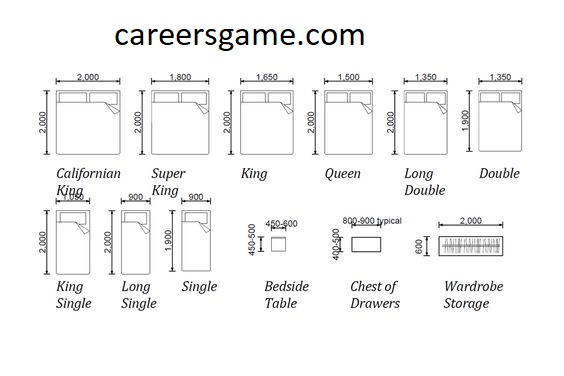When it comes to designing or renovating a home, one of the most important considerations is the size of each room, particularly bedrooms. The standard bedroom size can vary depending on numerous factors, including location, architectural style, and intended use. Understanding these dimensions is crucial for homeowners and designers alike, as it influences furniture placement, functionality, and overall comfort. In this article, we will explore standard bedroom sizes, their implications, and tips for optimizing these spaces.
Understanding Standard Dimensions
The typical size of a standard bedroom size can vary significantly based on whether it is classified as a master bedroom, guest bedroom, or children’s room.
- Master Bedrooms: Generally, the standard size for a master bedroom ranges from 200 to 300 square feet. These rooms are designed to accommodate a larger bed—usually a king or queen size—along with additional furniture like nightstands, dressers, and possibly seating areas. Dimensions often range from 12×12 feet to 15×20 feet, providing ample space for both comfort and functionality.
- Guest Bedrooms: Guest bedrooms are typically smaller than master bedrooms, often falling between 120 to 200 square feet. These rooms are designed for occasional use and may have dimensions around 10×10 feet to 12×15 feet. While they still need to accommodate a bed and basic furnishings, they may not require the same level of space as a master bedroom.
- Children’s Bedrooms: The size of children’s bedrooms can vary widely based on age and individual needs. Standard dimensions usually range from 10×10 feet to 12×12 feet. These rooms often include space for toys, study areas, and storage, which can require additional planning.
Understanding these standard dimensions is essential for anyone involved in home design or renovation. Whether you are building a new home or redesigning existing spaces, having a clear understanding of bedroom sizes ensures that you create comfortable, functional living areas.
Factors Influencing Bedroom Size
Several factors can influence the choice of bedroom size in a home:
- Location: Urban areas often feature smaller living spaces due to higher real estate costs. In contrast, suburban or rural homes may afford larger bedroom sizes due to more available land.
- Lifestyle: Families with children or those who frequently host guests may require larger bedrooms to accommodate additional furnishings and activities. On the other hand, individuals or couples may prefer smaller, more manageable spaces.
- Architectural Style: The design and layout of a home can also dictate bedroom sizes. Modern homes often feature open floor plans with larger bedrooms, while traditional designs may have more compartmentalized spaces.
- Building Regulations: Local building codes may set minimum size requirements for bedrooms, which can influence their overall dimensions. These regulations are often in place to ensure safety, comfort, and adequate living space.
Designing Within Standard Sizes
Once you have established the standard sizes for your bedrooms, the next step is to optimize the design within these dimensions. Here are some tips for creating functional and aesthetically pleasing spaces:
- Furniture Layout: Carefully consider the arrangement of furniture to maximize space. Use a bed frame with built-in storage to reduce clutter and free up floor space. Nightstands and dressers should be proportionate to the size of the bed and room, ensuring that there is still room to move comfortably.
- Color and Light: Lighter color palettes can create an illusion of space, making a smaller bedroom feel larger. Incorporating mirrors can also reflect light and visually expand the room. Natural light is essential; maximizing window space can enhance the room’s overall ambiance.
- Multi-Functional Spaces: For smaller bedrooms, consider multi-functional furniture, such as a bed with storage drawers or a fold-out desk. This approach allows for efficient use of space without compromising comfort.
- Personal Touches: Make the room feel personal and inviting by incorporating decorative elements such as artwork, textiles, and plants. These touches can make even the smallest of rooms feel warm and welcoming.
Conclusion
Understanding standard bedroom sizes is essential for homeowners, designers, and builders alike. By knowing the typical dimensions for various types of bedrooms, you can create spaces that are not only functional but also comfortable and visually appealing. Factors such as location, lifestyle, and architectural style play significant roles in determining the ideal size for a bedroom, and careful design can optimize these spaces for daily living.
By implementing thoughtful furniture arrangements, color schemes, and multi-functional elements, you can make the most out of any bedroom size. Whether you are working with a cozy guest room or a spacious master suite, the principles of design and optimization can help transform these areas into havens of rest and relaxation. Ultimately, the goal is to create a bedroom that meets your needs while providing a peaceful retreat from the hustle and bustle of daily life.



